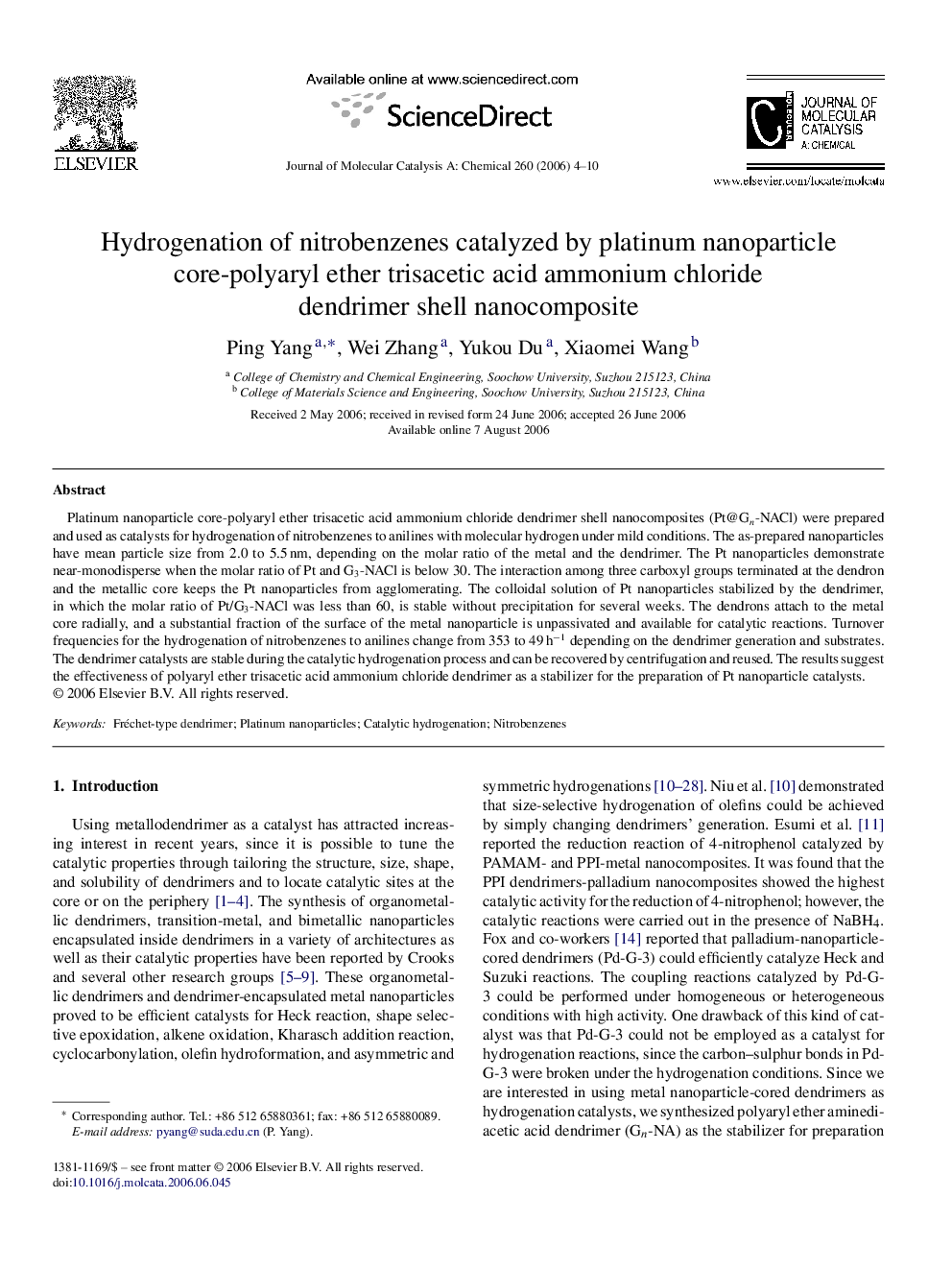| Article ID | Journal | Published Year | Pages | File Type |
|---|---|---|---|---|
| 68320 | Journal of Molecular Catalysis A: Chemical | 2006 | 7 Pages |
Platinum nanoparticle core-polyaryl ether trisacetic acid ammonium chloride dendrimer shell nanocomposites (Pt@Gn-NACl) were prepared and used as catalysts for hydrogenation of nitrobenzenes to anilines with molecular hydrogen under mild conditions. The as-prepared nanoparticles have mean particle size from 2.0 to 5.5 nm, depending on the molar ratio of the metal and the dendrimer. The Pt nanoparticles demonstrate near-monodisperse when the molar ratio of Pt and G3-NACl is below 30. The interaction among three carboxyl groups terminated at the dendron and the metallic core keeps the Pt nanoparticles from agglomerating. The colloidal solution of Pt nanoparticles stabilized by the dendrimer, in which the molar ratio of Pt/G3-NACl was less than 60, is stable without precipitation for several weeks. The dendrons attach to the metal core radially, and a substantial fraction of the surface of the metal nanoparticle is unpassivated and available for catalytic reactions. Turnover frequencies for the hydrogenation of nitrobenzenes to anilines change from 353 to 49 h−1 depending on the dendrimer generation and substrates. The dendrimer catalysts are stable during the catalytic hydrogenation process and can be recovered by centrifugation and reused. The results suggest the effectiveness of polyaryl ether trisacetic acid ammonium chloride dendrimer as a stabilizer for the preparation of Pt nanoparticle catalysts.
Graphical abstractPlatinum nanoparticle core-polyaryl ether trisacetic acid ammonium chloride dendrimer shell nanocomposite proved to be an active and efficient catalyst for the hydrogenation of nitrobenzenes to anilines under an atmosphere pressure of H2. The Pt nanoparticles capped by the dendrimer are stable during the catalytic hydrogenation process. The catalytic activity of the dendritic catalyst decreased with the increase of the generation of the dendrimer. The catalyst can be recovered and recycled for at least four times. Figure optionsDownload full-size imageDownload as PowerPoint slide
